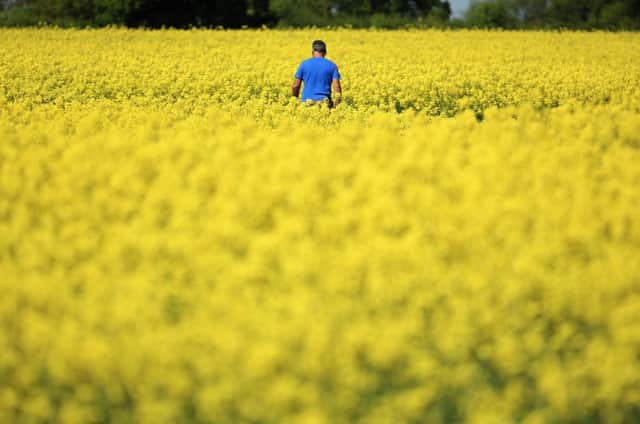Farming: Seed dressing ruling could be last straw


A complicated chain of events – which many claim owed more to pressure group lobbying and political pusillanimity than science – saw the attempts to have emergency authorisation of neonicotinoid seed dressings dropped. This leaves the growers of oilseed rape crops facing the experience of Scandinavian countries, where spring-sown oilseed rape suffered a 70 per cent crop loss after the ban was introduced there.
There was also some criticism voiced over the official cereal recommended list this week. Casual readers of this page might be forgiven for thinking that arable is a relatively unimportant part of Scottish agriculture. But output from cereals and the other mainstay crops which stood at £757 million last year was only slightly behind the £851m figure for finished beef and lamb.
Advertisement
Hide AdAdvertisement
Hide AdAnd of course, arable growers provide not only the raw materials for the country’s whisky trade but also supply a good proportion of the feed that goes down the throats of our cattle, sheep, poultry and pigs.
But in recent times all the noise and bluster has been coming from the livestock sector, with falling prices and reduced support levels in the cattle and sheep sectors featuring on an almost daily basis in the farming columns.
It might be easy to think that the arable sector has not faced the same turbulent times or the same threats through the reform to the Common Agricultural Policy.
But this isn’t the case: grain prices have plummeted in recent months and futures prices are at their lowest level now for many years, down somewhere between 30 per cent and 40 per cent on those of half-a-dozen years ago.
Arable growers are facing a fairly hefty dunt under the CAP reforms too, with the average producer facing cuts in the region of 20 per cent-25 per cent when the move to an area basis is complete. Crop growers also face a plethora of new rules and regulations in the form of the greening requirements of the new CAP and many of these will have considerable implications for how businesses operate.
Coping and complying with bureaucratic and regulatory burdens has been one factor contributing to the plateau in yields in recent years. Another factor has been the de-listing of existing crop control chemicals and the slow development of replacements – both of which have allowed crop pathogens to gain the upper hand in the disease control arms race.
Yet while cattle producers bellow like a Limousin bull pulled out of a field of maiden heifers over their troubles, Scotland’s arable farmers often seem to stand as silent as their fields of grain and take adversity on the chin.
What accounts for the difference in approach? The structure of the industry might play a part. Local livestock auction marts offer an immediate and transparent comparison of price performance – and there is always the auctioneer to criticise if the seller isn’t happy – whereas having a go at grain merchants who operate in the anonymous global marketplace is generally little more than a waste of breath.
Advertisement
Hide AdAdvertisement
Hide AdEven the bodies charged with promoting the respective products could hardly be more different. The “heid yins” at Quality Meat Scotland are known to most in the industry by their first names and are usually available at the other end of the phone should the fancy take an irate producer.
Yet I would imagine few could name the top brass of industry body the Home Grown Cereals Authority, let alone pick up the phone to give them hard time.
Temperament and experience might account for the difference between the horn men and the corn men – after all, running around shouting can sometimes help if a herd of cattle is heading off in the wrong direction, yet it seldom influences how a crop of barley grows.
However, as the pressure grows on the sector, cereal growers might be questioning their approach – and some are viewing the extra £45m announced alongside the CAP package for a beef improvement scheme as a case of the squeaky wheel getting the most oil.
So, although it might go against the grain, cereal-growers might be making more noise in the future.